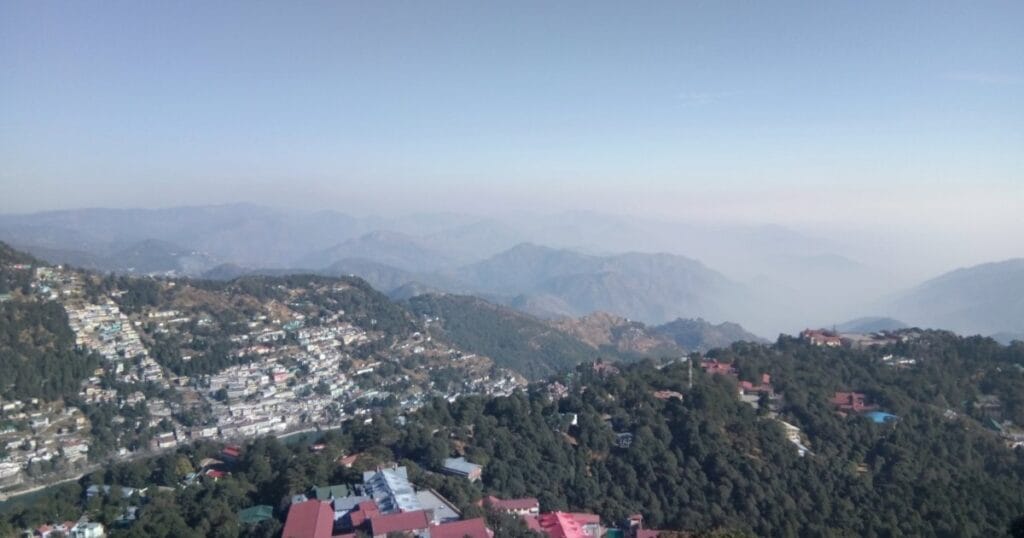
COMPETITIVE EXAM MCQs SERIES of ENVIRONMENTAL SCIENCE for UGC-NET/JRF, SLET, ARS, GATE, and other entrance tests – Contemporary Environmental Issues: India’s National Action Plan on Climate Change.
Syllabus Outline
- Climate change and its impacts in India
- India’s greenhouse gas emission profile and climate vulnerability
- National Missions under the National Action Plan on Climate Change (e.g. National Solar Mission, National Mission for Enhanced Energy Efficiency, National Mission on Sustainable Habitat, National Water Mission, National Mission for Sustaining the Himalayan Ecosystem, National Mission for a Green India, National Mission on Strategic Knowledge for Climate Change, National Bio-Energy Mission and other emerging mission areas)
- State Action Plans on Climate Change
- International commitments (e.g. Alignment with the United Nations Framework Convention on Climate Change, the Kyoto Protocol, and the Paris Agreement; integration with the United Nations Sustainable Development Goals)
- Recent developments and policy updates (e.g. India’s Net-Zero emissions target by the year 2070, Panchamrit declarations, Lifestyle for Environment movement, National Electric Mobility Mission Plan, India Cooling Action Plan, and the role of the International Solar Alliance)
This quiz contains concept-based, most frequently asked 25 MCQs of “Contemporary Environmental Issues: India’s National Action Plan on Climate Change”. Each question has a single correct/most appropriate answer.
*****
1. India’s National Action Plan on Climate Change, launched on 30 June 2008, originally consisted of how many National Missions?
A) 5
B) 6
C) 8
D) 10
2. According to the IPCC Sixth Assessment Report, which climate-related extreme is projected to increase in India as global warming rises?
A) Forest fire intensity and frequency
B) Heat waves intensity and frequency
C) Drought intensity and frequency
D) Tsunami and sea level rise
3. India’s National Climate Risk Index (2025) ranks India as the ___ most affected country by extreme weather events in last three decade.
A) 1st
B) 3rd
C) 6th
D) 10th
4. Which of the following sources contributes the largest share of greenhouse gas emissions within India’s agriculture sector?
A) Synthetic fertiliser use
B) Enteric fermentation
C) Rice paddy methane
D) Agricultural soil carbon emissions
5. India currently ranks as the ___ largest emitter of greenhouse gases globally.
A) 1st
B) 2nd
C) 3rd
D) 5th
6. Which Indian sector contributes the largest portion of the country’s CO₂ emissions?
A) Agriculture
B) Transportation
C) Power generation
D) Industrial processes
7. India has the world’s highest share of global emissions in which category?
A) Coal mining
B) Oil refining
C) Rice cultivation
D) Cement production
8. India is highly vulnerable to climate change because:
A) It has diverse topography and the largest population.
B) A large population of people relies on climate-sensitive resources.
C) It has the largest agricultural sector.
D) It has the largest coastlines and a large population that relies on marine resources
9. Mission LiFE’s strategy includes all of the following except:
A) Changing individual demand for sustainable products
B) Encouraging industries to supply green products
C) Policy advocacy for sustainable consumption
D) Encouraging EIA and LCA for non-green projects
10. Which initiatives are part of the National Mission for Enhanced Energy Efficiency?
I – Perform, Achieve, and Trade
II – Market Transformation for Energy Efficiency
III – Renewable Purchase Obligation
IV – Energy Efficiency Financing Platform
A) II and IV
B) I, II and III
C) I, II and IV
D) II, III and IV
11. The National Mission on Sustainable Habitat led to the introduction of which energy conservation code for residential buildings?
A) Energy Conservation Building Code
B) Eco-Niwas Samhita
C) National Building Code 2016
D) Roof-top solar mandate
12. Which objectives are part of the National Mission for Sustainable Agriculture?
I – Promoting location-specific integrated/composite farming.
II. Use of Solar Pumps for Irrigation.
III – Soil health management through the Soil Health Card scheme.
IV – Biofuel production from edible oils.
A) I and II only
B) I and III only
C) I, II, and IV only
D) All of the above
13. The National Bioenergy Programme (2021–26) includes the following components:
I – Waste-to-Energy
II – Briquettes & pellet production from Biomass
III – Biogas plants
IV – Solar Park
A) I only
B) I and III
C) I, II and III
D) All of the above
14. In which year did the Government of India instruct states to prepare State Action Plans on Climate Change?
A) 2008
B) 2009
C) 2012
D) 2015
15. Which of the following is NOT included in a State Action Plan on Climate Change?
A) Climate vulnerability assessments.
B) Sectoral adaptation and mitigation measures.
C) Research projects and activities on Climate Change, along with the financial needs of the state.
D) Climate-resilient infrastructure planning.
16. Which of the following is a common characteristic of the State Action Plans on Climate Change across Indian states?
A) They focus on a national action plan on climate change to align with the Government of India.
B) They include locally tailored mitigation and adaptation strategies.
C) They focus on renewable energy production.
D) They negate the need for national climate policy.
17. India is a party to which of these international agreements?
I – United Nations Framework Convention on Climate Change
II – Kyoto Protocol
III – Paris Agreement
IV – Montreal Protocol
A) I, II and III only
B) I and IV only
C) II, III and IV only
D) All of the above
18. Under the Paris Agreement (post-2015), India’s updated Nationally Determined Contribution includes which targets?
I – Reduce emissions intensity of GDP by 45% by 2030 from 2005 levels
II – 50% of cumulative installed power capacity from non-fossil fuels by 2030
III – Create carbon sinks of >2.5 billion tonnes of CO₂ through afforestation by 2030
IV – 30% reduction in threatened species by 2030 from 2005 levels
A) I, II and III only
B) I and II only
C) II, III and IV only
D) All of the above
19. The Paris Agreement’s long-term temperature goal is to:
A) Limit warming to below 1°C and pursue efforts to 0.5°C
B) Limit warming to below 2°C and pursue efforts to 1.5°C
C) Limit warming to below 3°C and pursue efforts to 2.5°C
D) Eliminate all emissions by 2070
20. Assertion (A): India’s cumulative share of global GHG emissions up to 2019 is around 4%.
Reason (R): Developed countries have historically emitted far more per capita than India.
A) Both A and R are true
B) A true, R false
C) A false, R true
D) Both A and R are false
21. India’s five-point “Panchamrit” commitments include:
I – 500 GW of non-fossil fuel capacity by 2030
II – 50% of energy requirements from renewables by 2030
III – Net-zero emissions by 2030
IV – Carbon intensity reduction by 45% by 2030
A) I and II only
B) I, II and III only
C) II, III and IV only
D) I, II, III and IV
22. Which of the following is not committed by India’s Panchamrit at COP26?
I – Achieve 500 GW non-fossil capacity by 2030
II – Meet 50% of energy needs from renewables by 2030
III – Achieve net-zero by 2030
IV – Phase out all coal power plants by 2030
A) III and IV only
B) I and II only
C) II, III and IV only
D) I, III and IV
23. India launched the concept of “Lifestyle for Environment” (LiFE) in:
A) 2020 at UNGA
B) 2021 at COP25
C) 2022 at Statue of Unity
D) 2023 at World Energy Congress
24. India has collaborated internationally by launching the International Solar Alliance along with:
A) United States
B) China
C) France
D) Russia
25. Which of the following was not a focus area mentioned for India’s recent climate policy updates?
A) Lifestyle changes for sustainability.
B) Electric mobility and clean transportation.
C) Cooling and refrigerant efficiency.
D) Reduction of fossil fuel plants in urban areas.
*****
Previous: Global Environmental Issues
Next: International Efforts for Environmental Protection
References
- R. Rajagopalan (2015) ENVIRONMENTAL STUDIES: FROM CRISIS TO CURE, Oxford University Press, Third edition
- Bharucha, E. (2013). Textbook of Environmental Studies. Universities Press, 3rd edition
- Abha Vashistha and Surabhi Johari (2020). Contemporary Environmental Issues and Challenges, Bloomsbury Prime
- William Cunningham and Mary Cunningham (2009) Environmental Science: A Global Concern, McGraw-Hill Education, 11th edition

